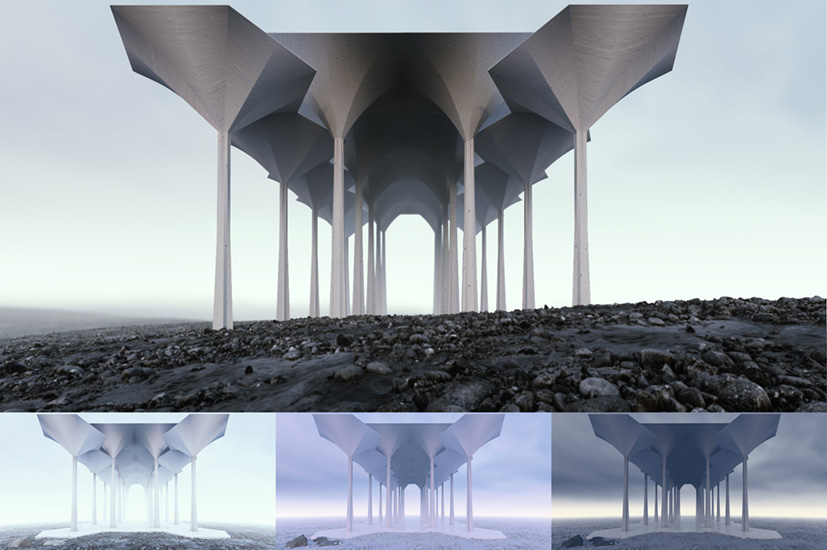
Virtual reconstruction and geometric analysis of Félix Candela’s inverted umbrellas for The Villahermosa Cathedral
Abstract
The paper presents the virtual reconstruction and analysis of the project for the Cathedral of Villahermosa in Tabasco (Mexico), designed by Félix Candela in 1960 in collaboration with Jorge Creel and Juan José Díaz. With 9-meter cantilevers supported by a single column and a height of more than 35 meters, the inverted umbrellas designed for the Cathedral would have been the tallest ever built by Candela using this structural system.
The project presents a variation of the traditional hyperbolic-paraboloid (hypar) umbrellas widely used by Candela in Mexico during the 50s and 60s. A parabolic discontinuity is introduced in each fragment of the surfaces, resulting in a structure formed by eight different hypars. This is not the first project where Candela used this type of variation, however, by modifying the direction of the generators and increasing the height of the hypars, it was possible to improve the curvature of the structure and reduce the deflections that appeared in previous constructions.
The virtual reconstruction of the project has been developed using a procedural non-destructive 3D model. The algorithm enables to modify the geometry and introduce different iterations in Grasshopper and Houdini. It has been linked with Unreal Engine, allowing to render the final project and its variations in real time and exporting the scenes to Virtual Reality. The procedure avoids the need of exporting multiple iterations -as they can be generated inside the render engine- as well as the loss of precision associated when converting NURBS to polygonal meshes in curved surfaces, using a discretization process.
DOI: https://doi.org/10.20365/disegnarecon.27.2021.10
Keywords
Full Text:
PDFRefbacks
- There are currently no refbacks.
Copyright (c) 2021 del Blanco
DISEGNARECON
ISSN 1828 5961
Registration at L'Aquila Law Court no 3/15 on 29th June, 2015.
Indexed in SCOPUS. Diamond Open Access. All papers are subjected to double blind peer review process by qualified reviewers.
Journal founded by Roberto Mingucci
